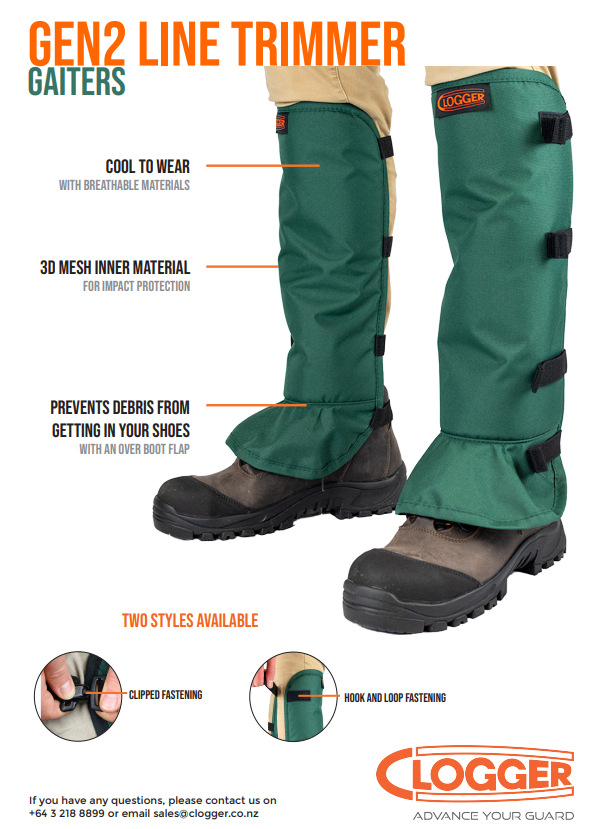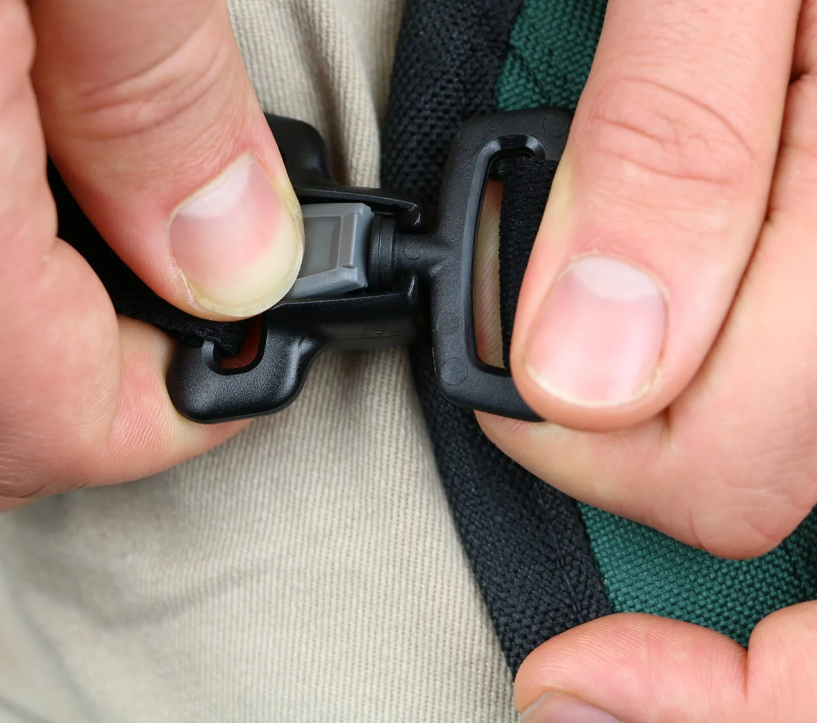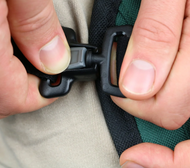Clogger has spent years talking to landscapers, grounds crews, and property owners across Canada. If there’s one thing everyone agrees on, it’s that Canada keeps you on your toes — the work changes, and so does the weather.
From Vancouver’s wet winters to Saskatchewan’s dry winds, Toronto’s humid summers to Halifax’s salty sea breezes, every region brings unique challenges. And no matter where you are, one tool almost always rides along in the truck — the string trimmer, better known to many Canadians as the weed whacker.
It’s the go-to for edging lawns, cleaning fence lines, and trimming where mowers can’t reach. But as handy as it is, it’s also one of the biggest culprits for lower-leg injuries. That’s where string trimmer gaiters come in.

What Are String Trimmer (Weed Whacker) Gaiters?
String trimmer gaiters, sometimes called whipper snipper gaiters — are protective leg coverings worn over your pants and boots. They act as a shield between your shins and the high-speed debris a trimmer kicks up.
When the nylon line or blade of a trimmer hits gravel, sticks, or hidden objects, it can launch them at speeds of over 60 km/h. At shin height, that’s enough to cut skin, cause bruising, or even send you to the ER. Gaiters absorb the impact before it ever reaches you.
Unlike heavy-duty chainsaw chaps, gaiters are lightweight and breathable, built for comfort and mobility. That means landscapers can walk, kneel, and climb without feeling restricted — a must when you’re trimming for hours at a time.

Why Canadian Landscapers Need Gaiters Year-Round
Anyone who’s worked a full season knows the hazards don’t stay the same. Each part of Canada, and each season, brings new risks.
Spring: Gravel and Winter Leftovers
When the snow melts, roadsides and lawns reveal everything winter buried — gravel from sanding trucks, broken branches, bits of glass or nails. In Alberta and Manitoba, flying stones are almost guaranteed in spring.
Summer: Growth and Hidden Hazards
By July, grass and weeds grow thick, hiding sprinkler heads, metal, or old fence wire. Ontario and Quebec crews often discover these the hard way when the trimmer line sends them flying.
Fall: Leaf-Covered Trouble
Autumn leaves blanket hidden debris like pinecones, sticks, and trash. In the Maritimes, coastal winds add shells and grit into the mix, each a potential projectile.
Winter: Mild-Region Risks
In southern BC, trimming sometimes continues year-round. Frozen clumps of dirt and ice-hardened gravel sting even more than summer debris, especially in the cold.
Regional Challenges Across Canada
-
British Columbia – Wet soil, moss, and storm debris in winter; dense summer growth.
-
Prairies – Dry, loose soil means constant risk of gravel projectiles.
-
Ontario & Quebec – Urban trimming near concrete, brick, and stone adds ricochet hazards.
-
Atlantic Canada – Coastal sand and shells fly with every cut.
-
Northern Territories – Tall grasses often hide wire, rusted metal, and animal burrows.
What Makes Clogger Gaiters Different
Clogger designed gaiters specifically for real trimming conditions. They’re tough enough to stop stones and sticks, yet light and breathable for muggy Ontario summers or dry Alberta heat. Adjustable straps fit securely over boots or winter layers, and once they’re on, they stay in place.
Most importantly, they’re built for comfort. Landscapers from Saskatoon to Halifax report wearing them all day without overheating — and often forget they’re there until a rock bounces off instead of skin.
More Than Just Debris Protection
While Canada doesn’t have venomous snakes like Australia, rural crews still encounter wildlife. From wasp nests to snapping turtles and even groundhogs, gaiters add a layer of safety when the unexpected shows up.
Keeping Your Gaiters in Shape
Care is simple: knock off dirt after each use, rinse when muddy, and let them dry before storing. Regularly check straps for a snug fit. With proper care, a single pair can last season after season.
The Bottom Line
Canada throws everything at landscapers — gravel in spring, growth in summer, hidden debris in fall, and frozen projectiles in winter. The hazards may change, but the need for leg protection doesn’t.
Clogger String Trimmer (Weed Whacker) Gaiters are built for this work: light, strong, and comfortable enough to wear every day. From BC’s drizzle to Prairie dust, Ontario’s humidity to Atlantic winds, they help Canadian crews stay safe so they can focus on the job.


